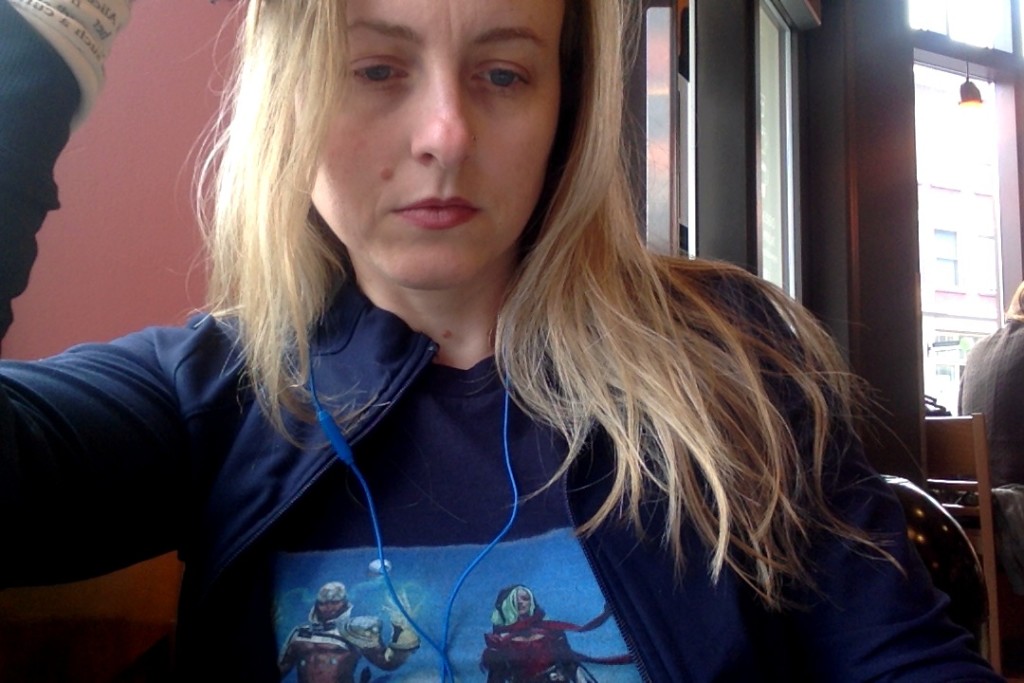
Today’s work is going back to the beginning, both literally and figuratively.
The idea for The Poison Eater came about when I was working on a short story for one of our fiction collections. The story idea was really exciting to me, but the story itself wasn’t quite coming together. I realized that part of the reason was because the story was bigger than I could tell in a short piece. It needed breathing room to explore the characters and the situation.
So, when I needed to come up with an idea for a Numenera novel, I dug up the draft of that story and used it as my inspiration. So much has changed since then, but the essence of it and the main character have stayed the same.
My novel-writing process is a jumbly process that I honestly don’t recommend to anyone else. It takes forever, it’s confusing, and it’s a lot of extra work in the end. But it works for me — and if there’s one writing “rule” that I believe in, it’s: Find what works for you.
To start, I write an “outline” — I put that in quotes because I’ve seen other author’s outlines, and they’re beautiful binders full of detailed plot points, chapters, scenes, and character backgrounds. Mine is a sentence. Or maybe two. And then I start writing. Each section that I write continues to add to that outline sentence. It’s very much like exploring the Ninth World in a game. Oh, look, here’s a new character! I should put them in. Look at this crazy place I just made up. I should put that in. Here’s a cool artifact. I should put that in!
Of course, it’s more complicated than that. Because each time I encounter something as I’m writing, I have to ask questions: What is the significance of this? Does it mirror the characters’ emotional states, the thematic elements of the book, or this particular plot point? What is its role in the story? Where do I need to “back fill?” (A good example of backfill: I was writing a chapter in the middle of the book and I wrote about one particular character wearing an object. The object just showed up as I was writing (this happens a lot, I think, if you’re open to discovery). And I realized that it was the perfect object for the character, but it needed to show up earlier in the book, so that it had even more emotional significance when it showed up in the middle. So I made a note in an earlier chapter to mention the object there for the first time).
Which brings me back to rewriting the opening chapter. Now that I know so much more about the characters and the story and the objects that matter, rewriting the first chapter is all about adding those elements and giving readers the foundation to understand the story. The opening chapter is a promise of what’s to come–and until I know what’s to come as the writer, I can’t promise it to readers. I’m sure the first chapter will change again, as I continue to write and learn about the novel. In fact, this is pretty early in the process for me to go back and revisit the first chapter, but we’re sending it out to KS backers as a reward soon, so I want it to be as close as possible to its final form before it goes out.
Remember: Poison never lies.
Shanna
~~
Follow along! If you’re interested in learning how this novel (or, really, any novel) comes together, feel free to subscribe to this blog. Over on the right in the sidebar, you can subscribe to JUST posts that pertain to The Poison Eater, so you don’t get all the other stuff. Or just click The Poison Eater category to get a list of all the previous posts.

Thanks for writing these posts, Shanna. I love seeing how different writers do their thing. When I’m writing, I do like that feeling of discovering something new that really fits, and then going back to work it in to all the other places it belongs in the story.